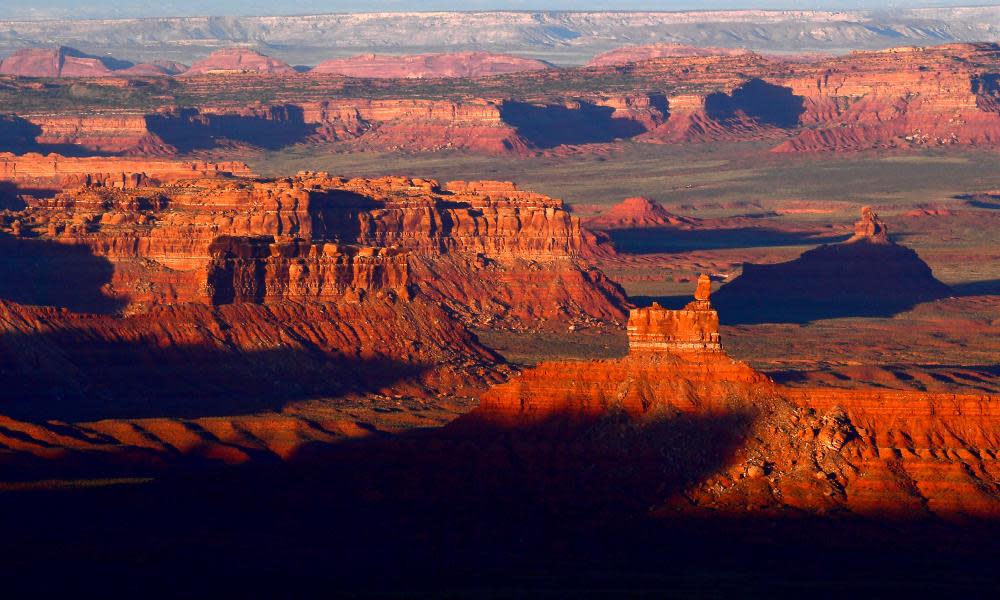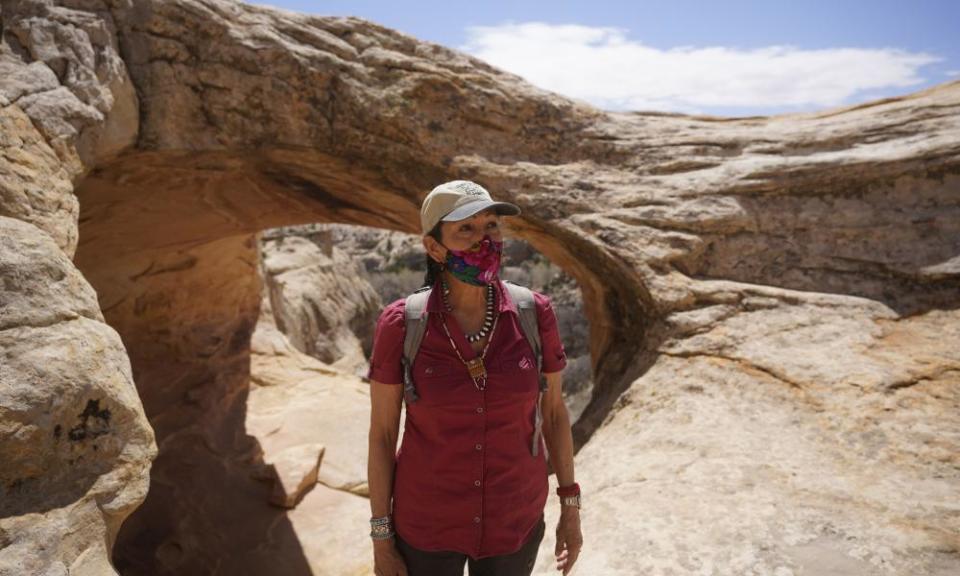Biden to restore Bears Ears and Grand Staircase Escalante monuments

- Oops!Something went wrong.Please try again later.
- Oops!Something went wrong.Please try again later.
Joe Biden will expand two sprawling national monuments in Utah that were downsized significantly under Donald Trump, the state’s governor said on Thursday.
The move marks a victory for environmental advocates and Indigenous leaders who had fought for years to restore protections for the Bears Ears and Grand Staircase-Escalante monuments.
Bears Ears and the Grand Staircase-Escalante cover vast expanses of southern Utah, where red rocks reveal petroglyphs and cliff dwellings and distinctive twin buttes bulge from a grassy valley. The Trump administration had cut Bears Ears, on lands considered sacred to Indigenous peoples, by 85% and slashed Grand Staircase-Escalante by nearly half.
The Arizona representative Raul Grijalva, a Democrat and chairman of the House natural resources committee, praised Biden in a statement, saying the move to restore protections for the monuments showed his administration’s commitment to “conserving our public lands and respecting the voices of Indigenous peoples”.
“It’s time to put Trump’s cynical actions in the rear-view mirror,” he said.
However, Utah’s Republican governor, Spencer Cox, expressed disappointment in the administration’s decision over the monuments, which have been at the center of a long-running public lands tug-of-war between presidential administrations. The governor noted he had offered to work with the administration on a legislative solution.
“The president’s decision to enlarge the monuments again is a tragic missed opportunity – it fails to provide certainty as well as the funding for law enforcement, research, and other protections which the monuments need and which only congressional action can offer,” Cox said in the statement released with other state leaders.
Cox’s statement did not include specifics on how much of the monuments will be restored, and the White House and the US interior department declined immediate comment. An official announcement from Joe Biden is expected soon.
The Utah senator Mitt Romney also criticized Biden by saying in a tweet he had “squandered the opportunity to build consensus” and find a permanent solution for the monuments.

“Yet again, Utah’s national monuments are being used as a political football between administrations,” Romney said on Thursday.
Jennifer Rokala, executive director of the Center for Western Priorities, a conservation group, applauded Biden’s decision and said she hoped it marked a step towards his goal of conserving at least 30% of US lands and ocean by 2030.
“Thank you, President Biden,” Rokala said in a statement. “You have listened to Indigenous tribes and the American people and ensured these landscapes will be protected for generations to come.”
The interior secretary, Deb Haaland, the first Indigenous Cabinet secretary, traveled to Utah in April to visit the monuments, recommending they be returned to their original size.
Barack Obama proclaimed Bears Ears a national monument in 2016. The site was the first to receive the designation at the specific request of Indigenous nations.
The Bears Ears buttes, which overlook a grassy valley, are considered a place of worship for many tribes, according to Pat Gonzales-Rogers, executive director of the Bears Ears Inter-Tribal Coalition. The group incudes the Hopi Tribe, Navajo Nation, Ute Mountain Ute Tribe, Pueblo of Zuni and Ute Indian Tribe.
Trump’s reductions to Bears Ears and Grand Staircase-Escalante were among the most controversial environmental decisions of his administration, and paved the way for potential coalmining and oil and gas drilling on lands that were previously off-limits. However, development has been limited due to market forces.

